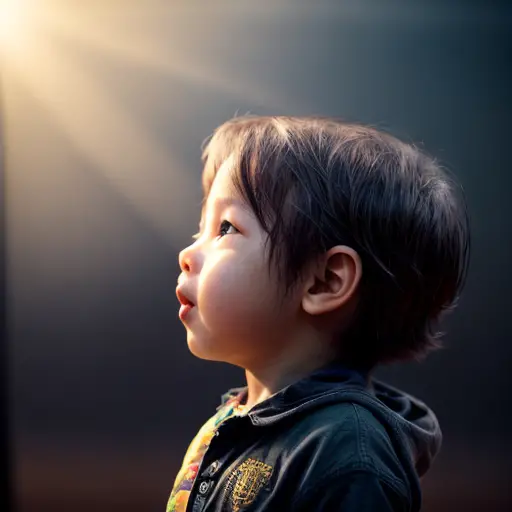Understanding Animism in Child Development: An Introduction to a Fascinating Cognitive Phenomenon
Understanding Animism in Child Development: An Introduction to a Fascinating Cognitive Phenomenon
Picture this: a child, wide-eyed and curious, staring at a teddy bear and confidently declaring, 'Mr. Fluffy has feelings too!' Welcome to the enchanting world of animism in child development, where young minds possess an extraordinary ability to attribute life and consciousness to inanimate objects. It's like witnessing a mini Spielberg in action, as children effortlessly create their own magical narratives, complete with talking toys and imaginary friends. This captivating cognitive phenomenon, known as animism, offers a glimpse into the imaginative prowess of our little ones, reminding us that reality is just a playground for their boundless creativity. So, buckle up and prepare to embark on a whimsical journey into the captivating realm of animism, where even the most ordinary objects can become extraordinary companions in a child's vibrant imagination.
The Origins of Animism: Unveiling the Intricate Relationship between Children's Thinking and the Natural World
An interesting fact about animism in child development is that it is a common cognitive bias that emerges during the preoperational stage of development, typically between the ages of 2 and 7. Animism refers to the belief that inanimate objects, such as toys, dolls, or even natural phenomena like the sun or the wind, have human-like qualities, thoughts, and intentions. Children may attribute emotions, desires, and even consciousness to these objects, treating them as if they were alive. This phenomenon highlights children's imaginative and creative thinking, as they try to make sense of the world around them.
The Origins of Animism: Unveiling the Intricate Relationship between Children's Thinking and the Natural World
Imagine a child, gazing at a fluttering butterfly and whispering, 'I think it's a fairy in disguise!' Ah, the wonders of animism in child development, where the line between the real and the magical blurs effortlessly. As we delve into the origins of this enchanting phenomenon, we discover a profound connection between children's thinking and the natural world. It's as if their minds are intricately woven with the threads of nature, allowing them to perceive life and consciousness in every nook and cranny. From talking trees to mischievous rocks, animism reveals the awe-inspiring way in which children embrace the world around them, reminding us that imagination knows no bounds when it comes to exploring the mysteries of our existence. So, let us embark on a journey of discovery, where we unravel the intricate relationship between children's thinking and the captivating wonders of the natural world.
Unraveling the Cognitive Mechanisms: Exploring How Animistic Thinking Shapes Children's Perception and Understanding

Unraveling the Cognitive Mechanisms: Exploring How Animistic Thinking Shapes Children's Perception and Understanding
Animism in child development is not just a whimsical flight of fancy; it is a fascinating cognitive phenomenon that shapes the way children perceive and understand the world around them. As we delve into the intricate workings of animistic thinking, we uncover a complex web of cognitive mechanisms at play. One such mechanism is anthropomorphism, where children attribute human-like qualities to non-human entities. This tendency allows them to relate to objects and creatures in a way that mirrors their own experiences, fostering empathy and emotional connections.
Another cognitive mechanism that underlies animistic thinking is animacy detection. Children possess an innate ability to discern between living and non-living entities, and this skill influences their perception of the world. In their eyes, a stuffed animal becomes a trusted confidant, a tree becomes a wise guardian, and a cloud becomes a playful companion. By imbuing life into inanimate objects, children expand their understanding of the world and develop a sense of wonder and curiosity.
Furthermore, animistic thinking is closely tied to children's theory of mind, the ability to understand and attribute mental states to oneself and others. Through animism, children explore the concept of intentionality, believing that objects have desires, thoughts, and intentions just like humans do. This imaginative exploration not only fuels their creativity but also enhances their social understanding and empathy, as they navigate the complexities of human interactions through their interactions with the animate world around them.
In unraveling the cognitive mechanisms behind animistic thinking, we gain a deeper appreciation for the richness and complexity of children's cognitive development. Animism serves as a window into their imaginative minds, showcasing their innate curiosity, empathy, and ability to make sense of the world in their own unique way. So, let us continue to explore and celebrate the captivating ways in which animistic thinking shapes children's perception and understanding, reminding us of the magic that lies within their developing minds.
Implications for Developmental Milestones: Examining the Role of Animism in Children's Social
Fun fact: Animism is a common stage of cognitive development in children, where they believe that inanimate objects have thoughts, feelings, and intentions just like humans do. So, don't be surprised if your child insists on apologizing to their favorite stuffed animal or asks you to say 'goodnight' to their toys before bed!
Implications for Developmental Milestones: Examining the Role of Animism in Children's Social Understanding
Animism in child development not only sparks the imagination but also plays a significant role in shaping children's social understanding. As children engage in animistic thinking, they begin to develop a deeper sense of empathy and perspective-taking. By attributing thoughts and feelings to objects, they gain a greater understanding of the inner lives of others. This newfound awareness extends beyond the animate world, influencing their interactions with peers and adults. Through animism, children learn to navigate social situations with sensitivity and compassion, recognizing that everyone, even inanimate objects, may have their own unique experiences and emotions. Thus, animism serves as a stepping stone in the development of social skills, fostering a greater understanding of the complexities of human relationships and enhancing their ability to connect with others on a deeper level.

